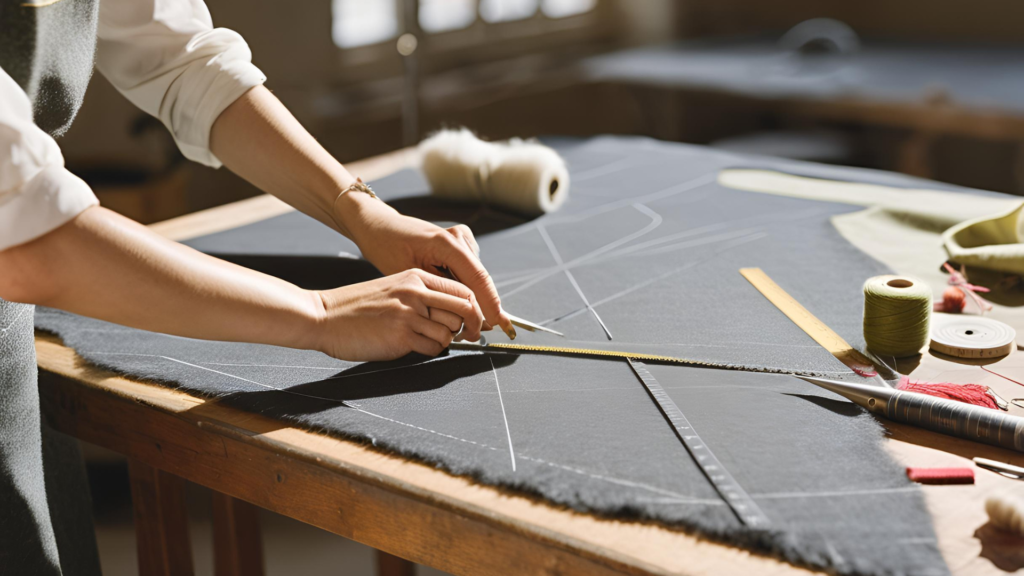Mastering Suit Making Challenges
Creating a perfectly tailored suit is an art that requires skill, patience, and attention to detail. While the process of suit making may seem straightforward, several challenges can make it complex. From selecting the right fabric to ensuring precise stitching, every step plays a crucial role in the final fit and appearance.
Whether you’re an aspiring tailor or a fashion enthusiast looking to understand the intricacies of bespoke tailoring, mastering suit making challenges is essential. This guide will explore the most difficult aspects of making a suit and provide expert tips on how to overcome them, ensuring that your final product is nothing short of perfection. By mastering suit making challenges, you can create suits that offer impeccable fit, durability, and style.

Understanding Fabric Selection
One of the first and most crucial steps in suit making is choosing the right fabric. Fabric selection impacts the fit, durability, and comfort of the suit. The right fabric can enhance the suit’s appearance and longevity, while the wrong choice can lead to discomfort and poor durability.
Challenges:
- Understanding the weight and texture of different fabrics
- Selecting the right fabric for the season and occasion
- Ensuring fabric durability and ease of maintenance
- Managing fabric shrinkage and stretch
How to Master It:
- Know Your Fabrics: Familiarize yourself with different suit fabrics and their properties.
- Wool: The most common suit fabric, wool is versatile, breathable, and comes in various weights.
- Linen: Perfect for summer, linen is lightweight and breathable but wrinkles easily.
- Cotton: Less formal than wool, cotton suits are comfortable and breathable.
- Polyester Blends: Often blended with wool, polyester adds durability but can feel less breathable.
- Tweed: Heavier and warmer, tweed is ideal for colder weather and has a rugged texture.
- Silk and Velvet: Luxurious fabrics used for special occasions or statement pieces.
- Choose the Right Fabric for the Occasion:
- A business suit should be made from a durable and professional-looking fabric such as wool.
- A summer wedding suit benefits from lightweight materials like linen or cotton.
- A winter suit requires heavier fabrics like flannel or tweed.
- Understand Fabric Weave and Weight:
- Super 100s-180s Wool: The higher the number, the finer and softer the wool, but also more delicate.
- Herringbone and Houndstooth: These weaves add texture and depth to a suit.
- Plain Weave vs. Twill Weave: Twill is more durable, while plain weave is lighter and smoother.
- Always Pre-Treat Fabric:
- Pre-shrink or condition the fabric before cutting to avoid post-construction shrinkage.
- Test a fabric swatch for durability and comfort before committing to it.
- Mastering suit making challenges in fabric selection ensures that your final product is both stylish and long-lasting. The right fabric choice can make all the difference in comfort, appearance, and longevity.
Achieving the Perfect Fit
Getting the right fit is one of the biggest challenges in suit making. The suit should conform to the body without being too tight or too loose.
Challenges:
- Taking precise measurements
- Adjusting for posture and body asymmetry
- Ensuring a balance between comfort and aesthetics
How to Master It:
- Use a detailed measurement guide and always double-check your figures.
- Make a test garment (muslin) to refine the fit before cutting the final fabric.
- Understand the basics of pattern alterations and how they affect the overall fit.
- Mastering suit making challenges in achieving the perfect fit ensures both comfort and sophistication.
Constructing a Well-Defined Shoulder Structure
The shoulders are the foundation of a well-fitted suit. A poorly constructed shoulder can ruin the overall silhouette.
Challenges:
- Ensuring symmetry between both shoulders
- Achieving a natural shoulder slope
- Selecting the right padding to maintain structure
How to Master It:
- Use high-quality shoulder pads that complement the wearer’s physique.
- Carefully align and sew the shoulder seams to maintain symmetry.
- Press the shoulder seams properly to remove puckering and create a smooth finish.
- Mastering suit making challenges in shoulder construction leads to a sharper, more professional look.
Perfecting Lapels and Collar
The lapels and collar define the style and elegance of a suit. They must be sewn with precision for a refined look.
Challenges:
- Ensuring even lapel width and a clean roll
- Preventing gaping between the lapel and chest
- Aligning the collar with the shoulder seam
How to Master It:
- Use high-quality interfacing for structure and durability.
- Carefully hand-stitch the lapel to control the roll and maintain a crisp look.
- Test the fit of the collar before final stitching to prevent gaps or misalignment.
- Mastering suit making challenges in lapel and collar construction enhances the suit’s overall elegance.
Achieving Smooth and Even Stitching
Precision in stitching determines the durability and aesthetic appeal of the suit.
Challenges:
- Maintaining consistent stitch length
- Preventing fabric puckering
- Ensuring strong yet flexible seams
How to Master It:
- Use high-quality thread that matches the fabric weight.
- Practice even stitching on scrap fabric before working on the suit.
- Adjust the sewing machine settings based on fabric thickness.
- Mastering suit making challenges in stitching ensures long-lasting durability.
Ensuring a Balanced Sleeve and Armhole Fit
The sleeves must allow for natural movement while maintaining a tailored look.
Challenges:
- Setting in sleeves without puckering
- Ensuring mobility while maintaining a slim fit
- Achieving proper sleeve pitch (angle)
How to Master It:
- Use basting stitches to position the sleeve before final stitching.
- Allow ease in the armhole to improve movement without excess fabric.
- Rotate the sleeve slightly if needed to achieve a natural drape.
- Mastering suit making challenges in sleeve construction results in a comfortable yet stylish fit.
Crafting a Perfect Trouser Fit
Suit trousers should complement the jacket and provide both comfort and style.

Challenges:
- Achieving the correct rise and waistband fit
- Ensuring smooth creases without excess fabric
- Maintaining proper trouser length
How to Master It:
- Take accurate hip, waist, and inseam measurements.
- Use a waistband stabilizer to prevent stretching over time.
- Allow a slight break at the shoe for a modern, polished look.
- Mastering suit making challenges in trouser construction ensures a well-proportioned outfit.
Mastering Suit Making Challenges with Professional Finishing
A suit’s final look depends on fine details such as buttonholes, linings, and pressing.
Challenges:
- Making neat and durable buttonholes
- Ensuring smooth and secure lining attachment
- Giving the suit a professional press for a polished finish
How to Master It:
- Use a buttonhole machine or hand-stitch for a refined finish.
- Carefully attach the lining with small, even stitches to avoid bulk.
- Use a steam press to remove wrinkles and set the shape of the suit.
- Mastering suit making challenges in finishing ensures a sleek, high-end look.
Final Thoughts
Mastering suit making challenges requires patience, precision, and practice. From fabric selection to the final press, every step plays a crucial role in achieving a flawless fit. Whether you’re a beginner or an experienced tailor, continuously refining your skills will lead to impeccable craftsmanship.

[…] Choosing the right tailor is crucial to ensure your suit gets the best treatment. Here are some key factors to consider: […]